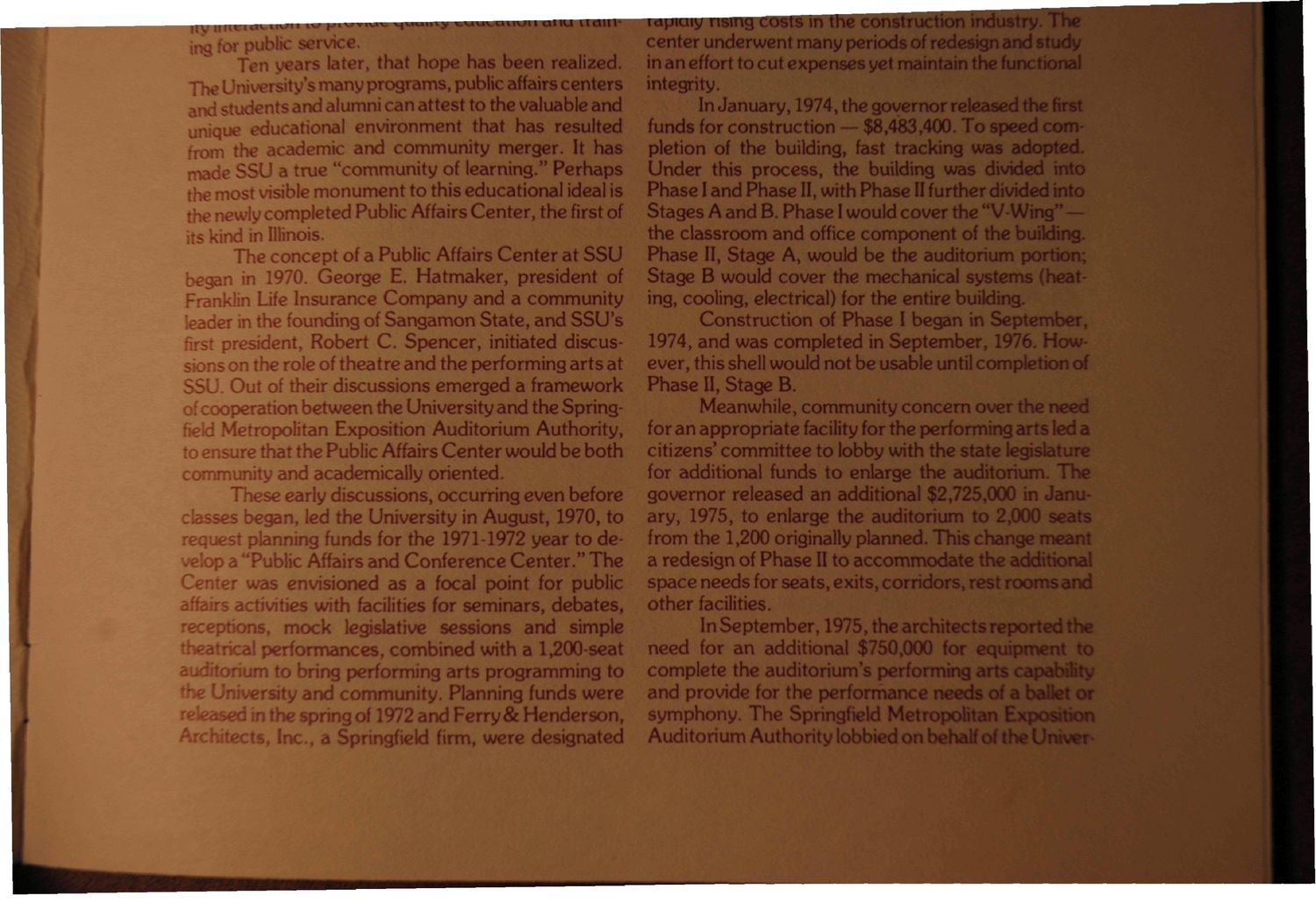| |
| |
Caption: Dedication - Public Affairs Center (UIS) (Dedication)
This is a reduced-resolution page image for fast online browsing.

EXTRACTED TEXT FROM PAGE:
ingforpublic service* ^ Ten years later, that hope has been realized. The University's many programs, public affairs centers and students and alumni can attest to the valuable and unique educational environment that has resulted from the academic and community merger. It has made SSU a true "community of learning." Perhaps the most visible monument to this educational ideal is the newly completed Public Affairs Center, thefirstof its kind in Illinois. The concept of a Public Affairs Center at SSU began in 1970. George E. Hatmaker, president of Franklin Life Insurance Company and a community leader in the founding of Sangamon State, and SSU's first president, Robert C. Spencer, initiated discussions on the role of theatre and the performing arts at SSU. Out of their discussions emerged a framework of cooperation between the University and the Spring? field Metropolitan Exposition Auditorium Authority, to ensure that the Public Affairs Center would be both community and academically oriented. These early discussions, occurring even before classes began, led the University in August, 1970, to request planning funds for the 1971*1972 year to develop a "Public Affairs and Conference Center." The Center was envisioned as a focal point for public affairs activities with facilities for seminars, debates, receptions, mock legislative sessions and simple theatrical performances, combined with a 1,200-seat auditorium to bring performing arts programming to the University and community. Planning funds were released in the spring of 1972 and Ferry & Henderson, Architects, Inc., a Springfield firm, were designated apiaiy rising cc center underwent many periods of redesign and study in an effort to cut expenses yet maintain the functional integrity. In January, 1974, the governor released the first funds for construction — $8,483,400. To speed completion of the building, fast tracking was adopted. Under this process, the building was divided into Phase 1 and Phase II, with Phase II further divided into Stages A and B. Phase I would cover the "V-Wing"— the classroom and office component of the building. Phase II, Stage A, would be the auditorium portion; Stage B would cover the mechanical systems (heating, cooling, electrical) for the entire building. Construction of Phase I began in September, 1974, and was completed in September, 1976. However, this shell would not be usable until completion of Phase II, Stage B. Meanwhile, community concern over the need for an appropriate facility for the performing arts led a citizens' committee to lobby with the state legislature for additional funds to enlarge the auditorium. The governor released an additional $2,725,000 in January, 1975, to enlarge the auditorium to 2,000 seats from the 1,200 originally planned. This change meant a redesign of Phase II to accommodate the additional space needs for seats, exits, corridors, rest rooms and other facilities. In September, 1975, the architects reported the need for an additional $750,000 for equipment to complete the auditorium's performing arts capability and provide for the performance needs ot a B H or symphony. The Springfield Metropolitan Exposition Auditorium Authority lobbied on behalf of the Unwtr* •
| |